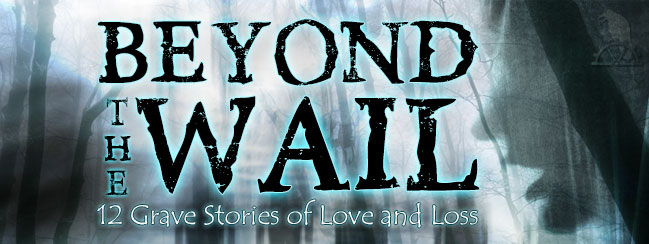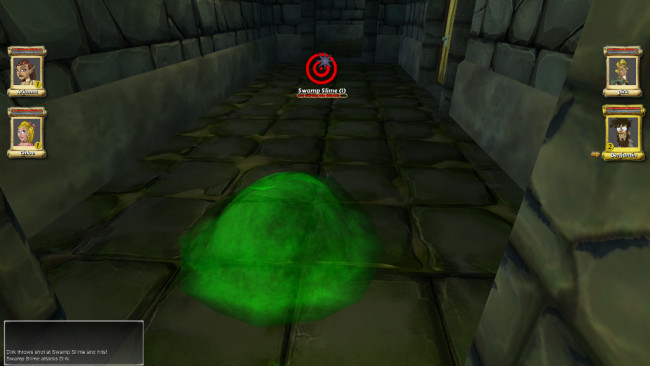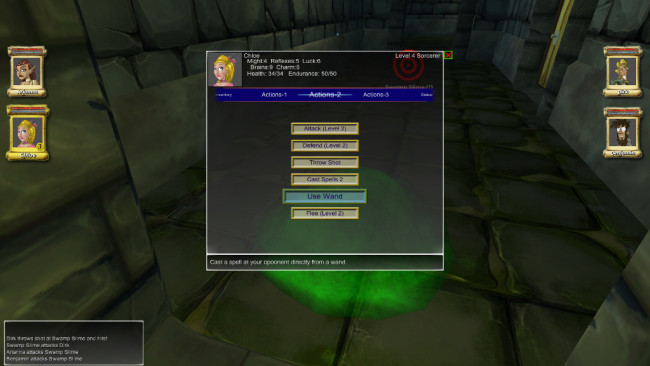The Importance of Not Being Average
Posted by Rampant Coyote on October 16, 2015
I was led to this incredibly awesome 40-minute long talk by Vlambeer’s Rami Ismael – one of the relatively big indie success stories of recent years – by Josh’s post at Kickbomb. I’ve got it embedded at the end of the post. It’s geared more for newbie entering the indie field, but it’s a great talk for everyone. It’s entitled “How to Survive Your First Indie Game,” or “You Stand No Chance.” While it’s sort of doom-and-gloomy at the beginning, the upshot is “do it anyway.” As in, “You are probably going to fail. But you should try anyway.” Not exactly a rosy vision of the brave, new world of indie.
Then there’s this, by even more-veteran indie Cliff “Cliffski” Harris:
Is Indie PC Gaming the Next Mobile?
This is not about the awesome early days of mainstream mobile iPhones the press got excited about when someone could make hundreds of thousands of dollars on an app that made fart noises. No, he’s talking about the wasteland of mobile gaming today… a battlefield littered with a million corpses of once-promising games. The goldmine that Steam once was when it was highly restricted and curated has become an open, Greenlight-fueled slush pile a mile high. People who thought “just get on Steam and make a bundle” are finding reality to be a lot more stark. A LOT more.
As a friend was saying, things don’t look good for the average indie. My response was, as always, that it’s NEVER been good for the “average” indie.
Still, it’s hard to come away from all of this without feeling a little bit gloomy. This is the brave, new world of indie that I was craving… just like the brave, new world of eBooks that can now bypass the chokehold of the publishers. YAY! For creators, it means you can sell directly to your customers… assuming you can find them and they can find you. For customers, it means a whole lot more content to choose from… just good luck trying to choose something that isn’t crap. Your choices get artificially curtailed because you’ve been burned too often taking chances on unknowns. But how does anybody get from being an unknown to a known… or be allowed to improve?
This is a hard problem. This is possibly an unsolvable problem on a general level. It’s also a very, very old problem. As old as there have been marketplaces in society. The most common solution on an individual basis is to throw a lot of money at it. Spend enough money (probably more than you expect to see back for a couple of years), and you may make yourself famous enough for people to pay attention. That is the Way of the Big Money, that is not the Way of the Indie.
The Way of the Indie starts with “don’t be average.” Don’t be inconspicuous (yeah, that’s a super-hard one for most of us… believe me, I’m totally there). Don’t follow the pack… try to make an end run around the pack and shortcut to where they are probably going. You may end up in the wrong place, but at least you won’t be lost in the crowd.
I wish I could say what the rest of the “Way of the Indie” was, but that’s sort of the nature of indie-dom… we’re all pretty individual and our paths are all different. As Ismail says, what worked for an indie in 2013 probably won’t work in 2015 or 2016. For that matter, even the Big Money approach still isn’t a guarantee.
I just get hammered with a feeling of how much I suck, because I’ve been through at least three of these boom-then-bust cycles as an indie, yet I never was able to capitalize on them during the gravy months. Maybe I’m still just trying to get out of the “don’t be average” category. Probably true… about the only non-average thing I’ve got going for me is indie and mainstream veterancy.
But here’s the thing… it’s always been the case that making games is a stupid way to make money. It’s way too hard and way too unpredictable. But like other creative professions, if you’ve got it in your heart and soul, you won’t give a crap about that and you’ll do it anyway. For those who do, I salute you!
Filed Under: Biz, Indie Evangelism - Comments: 2 Comments to Read
My Interview for Beyond the Wail
Posted by Rampant Coyote on October 15, 2015
In conjunction with the launch of “Beyond the Wail: 12 Grave Stories of Love and Loss,” I also did a short interview for the blog hop. You probably know way more about me than you want to know as far as game development is concerned if you are a long-time reader. But I brought up a couple of ancient stories of… um, stories:
A Storyteller’s Journey: Beyond the Wail Featured Author Jay Barnson
I talk a little bit more about the origins of the story and about my continuing development as a teller of stories. And of course, how I refuse to settle on being JUST a game developer OR an author. Frankly, I’m having too much fun doing both. Not sleeping a lot, but at least I’m having fun.
To top it off… a graphic by fellow author from the anthology, A. F. Stewart. She did one of these for all of the stories:
Filed Under: Books - Comments: Comments are off for this article
Beyond the Wail Blog Tour: L. K. McIntosh
Posted by Rampant Coyote on October 14, 2015
What is it about fear and the unknown that pulls so passionately at the human heart? Perhaps we are drawn not to the darkness itself, but to the resolution, the overcoming of what we most deeply dread. After all, the more terrible the struggle, the greater the victory when it comes at last. Presented in this anthology are twelve remarkable stories of the darkness that overshadows us, and the resolution that may be found beyond them. They are stories of fear and oppression, but ultimately stories of hope, stories that will take you BEYOND THE WAIL.
The Xchyler Publishing blog tour for the latest paranormal anthology continues here today with a spotlight of author L. K. McIntosh. One of the very cool things about anthologies is that it’s a great opportunity to sample new authors – or at least ones that are new to you. It’s extra cool being one of the authors in that I get to run into some of these really talented and creative people at conventions and book signings.
Xchyler authors range all over the world, but I suppose through word-of-mouth networking and their strong appearance at a couple of Utah conventions, we seem to have a pretty strong contingent of Utah authors! That, and Utah’s got a reputation for having an extremely high per-capita number of speculative fiction authors. Something in the water, I guess. So I’m doubly excited to introduce you to my fellow Utahn and my fellow author in Beyond the Wail, L. K. McIntosh.
 L.K. McIntosh has been making up stories about the people around her since she learned how to talk. She eventually discovered cultural anthropology, a fantastic and often macabre world of research rabbit holes and bare bones tales just begging to be fleshed out. She is irrationally terrified of sharks, which makes perfect sense, considering she has always lived in a landlocked state, and she is a proud supporter of the Oxford comma. She is currently working on two speculative fiction novels and several short stories. She physically lives in Salt Lake City, Utah, but tends to live life vicariously thanks to the Internet, books, television, and a vast array of interesting people.
L.K. McIntosh has been making up stories about the people around her since she learned how to talk. She eventually discovered cultural anthropology, a fantastic and often macabre world of research rabbit holes and bare bones tales just begging to be fleshed out. She is irrationally terrified of sharks, which makes perfect sense, considering she has always lived in a landlocked state, and she is a proud supporter of the Oxford comma. She is currently working on two speculative fiction novels and several short stories. She physically lives in Salt Lake City, Utah, but tends to live life vicariously thanks to the Internet, books, television, and a vast array of interesting people.
Her story is entitled, “The ‘Grim’ Reaper.” When a soul reaper loses the source of their power, the reaper must either find the witch who stole it or a new purpose for living.
With that, here’s a barrage of questions for her:
How did you come up with the concept of your story?
Xchyler provided a prompt of “Losers Weepers”, and the genre was paranormal, so I just kind of brainstormed for a bit. I like creating stories that are a bit different than what one would expect, so I didn’t want to do a story involving ghosts or psychics or creepy demon children. I landed on the concept of a reaper, with a beansidhe being a supporting character.
Please provide some insight into or a secret or two about your story:
I decided early on that the story didn’t necessitate a gender for the main character. The reaper is just a bundle of energy (granted, we all are), and doesn’t reproduce. They are just kind of there, doin’ what they do, reaping souls. So, I’ve gone with gender neutral pronouns when absolutely necessary. The story is in first person, so it allows a reader to decide for themselves what gender the character is.
What was the most surprising part of writing this story?
How difficult it was. Short stories are so much harder than you think they will be. You have to condense a tale into just 20 or so pages, but still have great character development, good conflict and tension, and a complete plot. Writing a good short story is an art (see Ray Bradbury or Neil Gaiman for proof of this). I have no idea whether or not I succeeded, but I sure tried my best!
What is your preferred writing genre?
Speculative fiction that dips into anthropology. I love to research things and then mold what I find into the framework or details of a story.
How does writing impact other parts of your life?
It’s more…the opposite of that. At my fulltime job it’s all facts, logic, and numbers, so it’s nice to come home and have more flexibility to be creative. But writing only ends up taking a small percentage of my time, due to work and other obligations. I try to make time when I can.
What is your advice to writers?
The same advice that I have to remind myself of every day – finish something. Even if it’s total crap, you can rework that into what you want it to be. Without a framework, your story can never unfold. So sit down, crack your knuckles, and start writing. No one has to see that first draft. Write it down, put it away for a little while, then come back and edit, and you’ll be able to get a better picture of your next steps – how to make your work into what your brain has envisioned.
Star Wars or Star Trek?
Star Wars, though I do like the new Star Trek films.
Harry Potter or Pirates of the Caribbean?
Harry Potter. Great stories, great character development, fairly consistent in the quality of the films. Plus, it’s a story I grew up with.
Vampires or Werewolves?
Vampires. Werewolves have too much hair, and the pack attitude gets a little old. Vamps can be molded into anything, and can be menacing without growling.
Sherlock: Robert Downey, Jr. or Benedict Cumberbatch?
Benedict Cucumberpatch. I think he’s a fabulous Sherlock, and his neuroticism is charming without trying to be.
You can learn more about L. K. McIntosh at her blog, Fantastical Observations. You can also follow her on Twitter or on Facebook. Or Pinterest, for that matter. And, naturally, Goodreads.
And – SUPER IMPORTANT! We’re giving away LOOT!!!! Enter for some prizes to thank you for checking out these blog posts about the book (if it doesn’t work, try this link):
Here are links to more blog posts that have already been published or are coming up over the next few days:
Book Release Blog Tour
Featured Author: Danielle E. Shipley |
|
 |
Saturday, October 10, 2015
|
Featured Author: Alex McGilvery |
|
 |
Sunday, October 11, 2015
|
Featured Author: T.N. PAYNE |
|
 |
Monday, October 12, 2015
png” alt=”L.K. McIntosh” width=”200″ height=”274″ />Melissa McShane, Author |
Featured Author: Ginger C. Mann |
|
 |
Tuesday, October 13, 2015
|
Featured Author: L.K. McIntosh |
|
 |
Wednesday, October 14, 2015
|
Featured Author: Jay Barnson |
|
 |
Thursday, October 15, 2015
|
Featured Author: A. F. Stewart |
|
 |
Friday, October 16, 2015
Perpetual Chaos of a Wandering Mind Anna Winter |
Featured Author: Amanda Banker |
|
 |
Saturday, October 17, 2015
|
Featured Author: Julie Barnson |
|
 |
Sunday, October 18, 2015
|
Featured Author: Sebastian Bendix |
|
 |
Monday, October 19, 2015
|
Featured Author: Tirzah Duncan |
|
 |
Tuesday, October 20, 2015
|
Featured Author: F.M. Longo |
|
 |
Wednesday, October 21, 2015
|
Filed Under: Books, Interviews - Comments: 2 Comments to Read
Delusion Meets Paranormal, Sadness and Amusement Ensue
Posted by Rampant Coyote on October 13, 2015
I’ve had two relatives (on my wife’s side) with dementia or something akin to it which causes hallucinations. My grandfather had it in conjunction with Alzheimer’s. And my wife’s aunt suffered from delusional episodes. With her grandfather, he was pretty much off in his own world most of the time anyway, so while frustrating and sometimes outright scary, it was sort of like he was in and out of a dream state almost constantly. It was sad because of how he used to be. He was constantly experiencing strange hallucinations, and would sometimes ask us about it.
I had a conversation with her aunt several years ago, and that was another story. I don’t know if it was properly diagnosed as dementia or something else, but she suffered from hallucinations. It reminded me of the movie A Beautiful Mind. She was a very intelligent woman and was fully cognizant of what was happening to her, and it frustrated her to no end. She could never be sure what was real and what wasn’t. She told one story of being woken up in the middle of the night by her family warning her that there was a fire, and they had to get outside and wait for the fire department. She could smell the smoke, and of course, her family was warning her. She grabbed what she could and stood out on the lawn with her family in the chilly night.
Then her son (?) came up to her and asked her what she was doing on the lawn. She said, “You told me to! There’s a fire.”
Nope, it was all a hallucination. Dreams merging with wakefulness. It infuriated her, because what was she supposed to do? Wait for her family to prove to her that the house was really on fire before she got out of bed?
That was the real tragedy of it all. With grandpa, he was more-or-less checked out all the time and only half-conscious when he was awake. He wasn’t really aware of what was happening to him most of the time. But with my wife’s aunt, she was sharp as a tack, fully aware of what was going on, and fully frustrated in a world where she couldn’t be 100% sure what was real and what wasn’t.
 And so it was with that background that I read Ginger C. Mann’s story, “The Poltergeist and Aunt Betty,” found in the new paranormal anthology Beyond the Wail by Xchyler Publishing. I couldn’t help but think of my discussion with my wife’s aunt. In the story, eccentric Aunt Betty is a dynamic, take-charge kind of lady who kinda storms through life, but she is plagued with mental issues and has to take medication. So when weird stuff starts happening to her, she takes it in stride as part of her unique condition, and her family members assume the same. But what happens when some of the weird, impossible stuff happening around her isn’t just a figment of her imagination?
And so it was with that background that I read Ginger C. Mann’s story, “The Poltergeist and Aunt Betty,” found in the new paranormal anthology Beyond the Wail by Xchyler Publishing. I couldn’t help but think of my discussion with my wife’s aunt. In the story, eccentric Aunt Betty is a dynamic, take-charge kind of lady who kinda storms through life, but she is plagued with mental issues and has to take medication. So when weird stuff starts happening to her, she takes it in stride as part of her unique condition, and her family members assume the same. But what happens when some of the weird, impossible stuff happening around her isn’t just a figment of her imagination?
Anyway, I’ve liked Ginger’s stories since reading “China Doll” in Shades and Shadows. I wonder if it’s a software engineer thing… maybe we get fascinated by similar details (Ginger is a software developer for a security company in Texas).
It’s only one of many great stories in the book, but it was one that perhaps hit me a little harder because of personal experience. Not first-hand experience thankfully, but it still made me think. Once again, I think one of the advantages of this kind of storytelling is that it necessitates the reader taking on some of the storytelling burden, and thus personalizing it.
Tomorrow I’m spotlighting author L. K. McIntosh, author of the story “The ‘Grim’ Reaper,” also featured in Beyond the Wail.
For today – Ginger gets the spotlight in other blogs, including Jana S. Brown’s blog, Kristin Baker’s Fairies & Pirates, and on L. K. McIntosh’s blog. She has interview details they are sharing with some insights into her story and with writing in general.
Have fun!
Filed Under: Books - Comments: Read the First Comment
Halloween Film Impressions: Haunter
Posted by Rampant Coyote on October 12, 2015
We’ve been so swamped so far this month that even taking time to watch a film together has been a challenge. Typically we end up watching something on Netflix Instant Play, which is pretty decent for watching TV (a season behind), but not so great for movies. Too many of the films available for streaming are good for Mystery Science Theater 3000 fodder (back when it was airing) and little else. (At least they do have some MST-3K episodes…)
But there are some gems. This weekend we caught an indie film called Haunter starring Abigail Breslin that we really enjoyed. Be warned, however… if you are expecting major scares and Halloween frights, this isn’t the film. It’s more like a supernatural thriller. It’s non-rated, but would probably warrant a PG-13 rating here in the U.S.
The trailer definitely makes it look like more of a scary thrill ride than it really is. It is absolutely a ghost story. It starts out with some bizarre circumstances right our of Groundhog Day and Twilight Zone episodes, and quickly moves on to some revelations that would have been part of the shocking climax at the end of some movies. But in Haunter, this is only the start of bigger things. You’ve got a supernatural villain capable of doing awful things to both the living and the dead, and he’s looking to claim his next victims.
It’s not perfect. One of my pet peeves in stories like this is that I feel the world-building and rules need to feel consistent. The big sin for me is to have creepy things happen which still don’t make sense when the credits roll. It feels like they were pasted on just to make the film creepier but had no business being there. That, or the explanation was left on the cutting-room floor. This one is better than many low-budget ghost flicks, and doesn’t fail this test very often, but there were a couple of situations where I thought at the end of the film, “Hey, which entity in the house was responsible for this, and why?” or “What triggered this thing happening?” The rules don’t have to be spelled out – in fact, it’s better if they remain a little mysterious – but they should feel consistent.
There other issues, too, but they didn’t detract too much from my enjoyment of the film. Overall, it’s a good creepy ghost story and a slow-burning good vs. evil thriller.
Filed Under: Impressions, Movies - Comments: Comments are off for this article
“Beyond the Wail” Paranormal Anthology Launches This Weekend!
Posted by Rampant Coyote on October 9, 2015
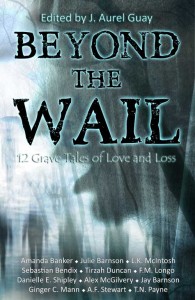 I’ll be spending some time next week talking about Beyond the Wail, which launches THIS WEEKEND! I’m doubly excited for this anthology, because my wife also has a story in it. Probably better than mine. What can I say? I married talent.
I’ll be spending some time next week talking about Beyond the Wail, which launches THIS WEEKEND! I’m doubly excited for this anthology, because my wife also has a story in it. Probably better than mine. What can I say? I married talent.
I’m not kidding. Ghost stories are literally her thing. Professionally. And she’s seen and heard some pretty creepy stuff as a tour guide for a local Ghost Tour. Her story is something that she’s wanted to write for a very long time, and this was the perfect opportunity.
The book is linked on Goodreads now. It’ll be available on Amazon in Paperback and Electronic format. I’m not certain where else it will be available yet.
It’s a fat offering with a dozen quality paranormal stories:
OF MICE AND MONSTERS by Tirzah Duncan: Benjamin struggles with his inner demons and a ghost from his violent past as he tries to help his timid girlfriend.
GO GENTLE by Julie Barnson: After the death of her boyfriend, a young musician uses her talents and a fabled violin to stop the fatal accidents at a dead man’s curve.
DEAD WATER by Amanda Banker: A stalled truck, an abandoned graveyard, and a town not found on any map take two brothers on a detour they’ll never forget.
COLD SPOT by Jay Barnson: When a laptop is stolen from their computer security company, two high school buddies go to extremes to investigate. But, will they manage to return?
THE WEEPING LADY by A. F. Stewart: Eva Douglas has the mother of all mother issues, but the disappearance of her sister forces her to confront the ghost trying to kill her.
THE POLTERGEIST AND AUNT BETTY by Ginger C. Mann: Aunt Betty is eccentric, but how much is ghost, how much is medication, and how much is just plain crazy?
THE ‘GRIM’ REAPER by L. K. McIntosh: When a soul reaper loses the source of their power, they must either find the witch who stole it or a new purpose for living.
SHRINE OF MIRRORS by F. M. Longo: A spy on a mission becomes a believer in the supernatural when the theft of three ancient relics threaten to bring down the empire.
DEAD MAN HOCKING by T.N. Payne: A world-weary zombie learns to beware what you wish for, and not all sure bets are worth the gamble.
ST. PETER’S FISH by Alex McGilvery: Sam is a walking disaster of biblical proportions, but how much is he willing to sacrifice to escape, and will the Powers That Be allow it?
THE DIORAMA by Sebastian Bendix: A play set turns life around for Martin Taper, but things take a turn for the worse when he neglects it and the lonely child obsessed with it.
DATE DUE by Danielle E. Shipley: A magic library contains all the books never written. How far will the librarian go to see their favorites never see the light of day?
I’ll have some more information (and an interview) next week. Snag yourself a copy if you are looking for some good, quick reads appropriate for this Halloween season!
Filed Under: Books - Comments: 4 Comments to Read
Frayed Knights 2 Combat, Actions, and Readiness
Posted by Rampant Coyote on October 8, 2015
The last time I talked about the combat system in Frayed Knights 2: The Khan of Wrath (for now, I’m keeping the “2”), I was still a little bit abstract, because it was still in development. I’ve been living with the more-or-less complete system for about a year now, and it’s pretty integral to the rest of the systems. In the upcoming weeks, I want to talk about some of the other systems, but with so much based on how combat works, it’s important that I explain that one first.
In testing, it’s proven pretty easy once players figure it out, but it’s a bit of a leap. I think that’s mainly because it is so different from most other RPGs. I may need to change some of how it’s presented, but the system underneath may only change by a few details. But while the UI artwork is not final, I included pictures of the game in progress as examples to help explain things. Here are the key points about combat in Frayed Knights 2:
- It’s a turn based system. Still.
- There is no strict initiative order. Once a character is “ready” enough to act, you can choose an action for them at any time. But…
- Characters have three levels of readiness, which increase as they are left idle.
- The game alternates turns between the player party and the enemy party in phases. However, that’s all “under the hood.” You may end up with one party having characters go two (or more) times in a row, if nobody is ready to act on the other side.
- Higher levels of readiness grant access to more complex (often not always more powerful or more preferred) actions
- A character’s fatigue, and “slow” and “haste” effects determine how quickly they increase in readiness
- Nobody can act twice in a single turn unless they have a haste effect
- The turn ends when everyone who can act that turn in both groups have acted.
So why do it this way? The biggest reason is that it allows more tactical play. For example, a “buff” or “debuff” is a lot more useful if cast at the very beginning of combat than at the end. You may want to try and cast ‘silence’ on an enemy caster BEFORE they have a chance to hit you with their most powerful spell. Or you may want to use than wand of fireballs to clear out the low-level “riff raff” before they get a chance to attack. It puts the flexibility for combat more in the hands of the player.
And… muhahah… the AI.
So here are some examples to show combat in action. A fight begins! In this picture, Dirk has just taken an action. He doesn’t have a number by his portrait now, because he’s both not ready yet, and can’t take another action until next turn. But Chloe and Arianna are at readiness tier 1… ready to take basic actions. Benjamin, who was ready previously, is now up to readiness 2 – able to take more complicated actions at tier 2 (or the basic ones, too).
That slime should look familiar for players of the first game.
Benjamin is the default character the game auto-selects, since he has the highest readiness level. That’s why his border is gold and there’s a little gold arrow pointing at his name (those indicators may not be final, and are in fact probably not). However, you can change which character acts just by clicking on their portrait.
Okay, we have Benjamin and Arianna attack, which leaves the swamp slime nearly dead. Now, at each tier there’s a different attack and defend (brilliantly named Attack 1, Attack 2, and Attack 3, and so forth). At low level, the higher-tier versions of the actions are only marginally better than their lower-tier counterparts, but use more endurance. However, when we talk about skills in a future installment, we’ll talk about how they can become much, much more powerful as you level up.
Anyway, everyone has gone this turn but Chloe. When Benjamin attacked, her readiness went up to 2, and then after Arianna attacked, she went up to readiness 3. By saving her for last, she’s got access to all of her combat abilities. However, in this case, she’s using a tier 2 Action instead of a tier 3 (which you can see she has access to, on the blue menu). You can use a wand at readiness 2. In FK2, wands cast offensive spells. Scrolls cast defensive and utility spells, and can be used as a tier 1 action.
I should note here that since Dirk has been effectively idling this turn for the last three actions, if this combat was going to go to a second turn, he’d probably start the turn at readiness 3. However, Chloe’s wand sizzled the slime down to nothing, and so the combat only lasted a single turn.
After that, well, it’s time to loot. Somehow the slime left behind a bag of loot. I should probably prevent slimes and other unintelligent monsters from dropping bags of general loot, but that’s polish & balance. This is totally non-combat / action / readiness related, but I just wanted to post a loot screenshot. As a gamer, it’s one of my favorite parts of the game. 🙂
We’ll talk more about this stuff in a future post, but one of the loot items is a spellbook. Spellbooks are the main way you learn new spells in Frayed Knights 2. Since spells are mostly dynamically generated, there’s a potentially infinite number to learn. This particular one is a divine spell that makes an entire group of enemies go blind for 3 turns. I’m gonna suggest that’s probably overpowered for a level 4 spell. Again, polish & balance. However, at this level, none of the Frayed Knights can cast divine spells. As they level up, one of them might learn. Or they may have someone else in the party in the future who can use it. Or they can sell it.
Okay, so a few questions you might have:
How about non-combat? Outside of combat, you have access to all of your non-combat abilities all at once. There are no readiness levels.
Which side goes first? Depends on the encounter. In a surprise encounter, the surprised group all starts at 0 readiness and the group that did the surprise attack goes first. In standard encounters, everyone starts out at a level of readiness dependent on their Reflexes score (so Dirk usually goes first at this stage of the game), and it’s random with a bonus to the side with the character with the highest reflexes.
If a character is at readiness 3 and only uses a tier 1 action, do they recover more quickly next turn? Nope, the unused potential is wasted. Choose wisely.
How does fatigue figure into things? It slows the speed that a character progresses through readiness. Just like the Slow effect.
How do I change equipment in combat? Ah, the only equipment you can swap out in combat is hand-held items… weapons and shields. You do that by going to the inventory screen. It won’t even show you anything except weapons and shields (assuming you have any) in your party inventory in combat when you go there directly.
Have more questions? Let me know in the comments, and I’ll try my best to answer.
Filed Under: Frayed Knights - Comments: 13 Comments to Read
How Much Does It Cost To Make a Video Game?
Posted by Rampant Coyote on October 7, 2015
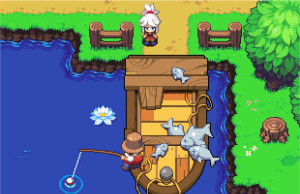 I want to make a video game. How much will it cost? How much time will it take? How many people do I need on my team? How much can I expect to sell?
I want to make a video game. How much will it cost? How much time will it take? How many people do I need on my team? How much can I expect to sell?
These are all what we often call “How long is a piece of string?” questions. There are so many variables involved that newcomers to indie game development don’t even know what they are or how ridiculous the questions sound to seasoned vets. Depending upon the “vision” the answers are, respectively, “Anywhere from nothing to hundreds of millions of dollars,” “somewhere between a week and forever,” “between none and a couple hundred,” and “probably more than none, but maybe not much more, and definitely less than Minecraft.”
Jason Schreier wrote a short report on Kotaku about yet another funded Kickstarter videogame failure, Midora. It was yet another example of what I talked about in my blog post earlier this week about indie survival skills. Then he had to go and ruin it with what I’m sure he thought was helpful but entirely wrong-headed advice:
“If you see a video game Kickstarter asking for less than, oh, say, $200,000 (aka: a year’s salary for four people working at below-average rates), you probably shouldn’t back it. And if you see a video game Kickstarter whose creators don’t seem to have any experience shipping actual video games, then, well, you probably shouldn’t back it.”
The latter point has some validity, and I’ve suggested the same before. Unless I have some other reason to trust them, I’m pretty hesitant to fund a team or leader without a track record. Of course, I phrase it as being “very cautious,” not “you probably shouldn’t back it.” If you are throwing $5 at someone to pursue their dreams, and you feel it’s a reasonable donation if nothing is ever delivered, go for it. Just know what you are getting into.
But that first sentence makes some really terrible assumptions:
#1 – Salaries are hard costs being covered by funding
#2 – The funding is covering all hard costs
#3 – The funding is covering the complete development of the game
#3 – The size and scope of a game is approximately equal to four people working a year
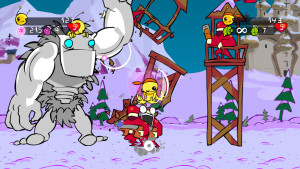 I remember a bit of a controversy many years ago with Alien Hominid by The Behemoth. For the IGF, they reported a budget of $1.3 million, which many people complained was too much for an “indie” game.But in interview with Russell Carroll (sadly, the page can only be found in the Internet Archive), producer John Baez explained that this wasn’t all hard costs. The number wasn’t an actual cash value that was put into the game, but reflected both that and the market value of donated time. So the $1.3 million was how much the game should have cost, and how much the founders were “owed” when the royalties started coming in (assuming success, of course):
I remember a bit of a controversy many years ago with Alien Hominid by The Behemoth. For the IGF, they reported a budget of $1.3 million, which many people complained was too much for an “indie” game.But in interview with Russell Carroll (sadly, the page can only be found in the Internet Archive), producer John Baez explained that this wasn’t all hard costs. The number wasn’t an actual cash value that was put into the game, but reflected both that and the market value of donated time. So the $1.3 million was how much the game should have cost, and how much the founders were “owed” when the royalties started coming in (assuming success, of course):
“When we were filling out the IGF entry, we decided it was best to put a number which accurately reflected the amount due to all the people who worked on the game as well as the out of pocket expenses. It didn’t make sense to us to put up just the out of pocket numbers because that doesn’t reflect what the game really cost to make. None of the founders of the Behemoth will see any money until we start seeing royalties… As far as Alien Hominid is concerned, we paid for 110% of the development of the game ourselves, including non-development things like marketing, trade shows, PR and getting reviewers to review the game. We didn’t use any outside money from our distributor O~3 Entertainment, venture capitalists or outside investors, we did it all internally by mortgaging or selling our homes, liquidating savings and the like. Some of the guys even worked side jobs or freelance.”
Dan Paladin followed up with a quip, “If putting MORE out of your own pockets on the line somehow makes you LESS indie, then someone needs to explain to me how that works.”
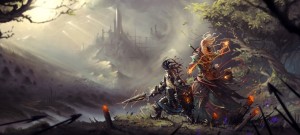 Even the “big indie” productions like InXile’s RPGs have included some out-of-pocket investment. The recently-completed Divinity: Original Sin 2 crowdfunding campaign was for purely supplemental features… the core game was self-funded by back-end revenue from the first game. In fact, one of the big complaints about Kickstarter and other crowdfunding campaigns nowadays is that give backers a highly inaccurate view of how much it costs to make a game. But in my view, the less experienced (and, dealing with reality, the less famous) the development team, the more they are going to have put into the project out of their own pockets. Maybe they get something on the back end. More often than not, no.
Even the “big indie” productions like InXile’s RPGs have included some out-of-pocket investment. The recently-completed Divinity: Original Sin 2 crowdfunding campaign was for purely supplemental features… the core game was self-funded by back-end revenue from the first game. In fact, one of the big complaints about Kickstarter and other crowdfunding campaigns nowadays is that give backers a highly inaccurate view of how much it costs to make a game. But in my view, the less experienced (and, dealing with reality, the less famous) the development team, the more they are going to have put into the project out of their own pockets. Maybe they get something on the back end. More often than not, no.
But even with a purely hobbyist project made completely out of donated spare time, there may be hard costs. Some may be purely for the project, others may be for the individuals or the studio in general. There are tool costs and licenses to consider. Getting booth space at a convention can eat up a lot of funds. Contracting out for music, art, or localization costs money. Advertising costs money. Applications for contests may cost money. It costs a little bit of cash even to get your game onto Steam Greenlight. Registering a domain name and running a website requires at least a small outlay of funds. A fast, professional download site for your demo may cost money.
These things can easily add up to thousands of dollars, even tens of thousands over time, and even a lone wolf drawing no salary working a day job to finance his game dev “hobby” may find himself struggling to deal with these expenses. That’s why crowdfunding is a cool idea. There’s no law or policy stating that these campaigns must or even should be complete coverage of game development costs. In my opinion, they shouldn’t be. Indies should be their own backers first and foremost, whether through donated time or self-funding (hopefully, eventually, through sales of previous games). Otherwise, are they really independent of anything? As a backer, would you want to back a team that didn’t have any of their own skin in the game?
 In some cases, a game is “nearly done” and is using crowdfunding as more of a way to generate publicity and pre-orders. It’s as much a marketing opportunity as a way to pay for the final stages of development, or possibly a way to gauge interest and determine whether or not to increase scope and features. It may be just to contract an artist to pay to turn programmer art into something that looks decent. It all depends. As a backer, the actual funding amount isn’t what you should pay attention to – it’s what the funding is paying for, who the team is, and how well they seem to have things under control.
In some cases, a game is “nearly done” and is using crowdfunding as more of a way to generate publicity and pre-orders. It’s as much a marketing opportunity as a way to pay for the final stages of development, or possibly a way to gauge interest and determine whether or not to increase scope and features. It may be just to contract an artist to pay to turn programmer art into something that looks decent. It all depends. As a backer, the actual funding amount isn’t what you should pay attention to – it’s what the funding is paying for, who the team is, and how well they seem to have things under control.
As a small, relatively unknown indie, getting crowdfunding to pay the entire cost of development is a non-starter. If a relative nobody without much of a track record with making games was looking for crowdfunding to 100% cover the cost of development, I’d be very suspicious. I’m more interested in indies that are determined to get their project done, and are using crowdfunding as an option, not the only solution. That’s how it should be.
Indie games are still being made without the benefit of crowdfunding. I think a healthy environment is one in which that is only one of a plethora of options. Especially for new developers, it may be best to go “on the cheap” and pay for it out-of-pocket as much as possible. After you’ve established a track record, THEN you can ask people to pay money for your promise.
So how much does a game cost, and how much of that should be reflected in a crowdfunding campaign? How much should make you suspicious as a backer?
How long is a piece of string?
Filed Under: Biz, Indie Evangelism, Production - Comments: 7 Comments to Read
“Done Played That Game Enough”
Posted by Rampant Coyote on October 6, 2015
I don’t know how long “categories” have been around in Steam, but I only discovered them a few months ago. It’s been both a curse and a blessing, although when used liberally with the search function to find a game in my HOLYCOWHOWMANYGAMESDOESONEMANNEEDTOOWN-sized library, it’s more of the latter. It’s really hard to categorize some games, but I have a list of what I think might constitute adventure games, RPGs, strategy games, first-person shooters, space combat games, simulators, etc. It works okay for me, I think.
Last week, I created a new category called “Done.” It’s for games that I feel I am sincerely done playing. Done and unlikely to reinstall. It’s sort of an oubliette to remove some games from my site.
Some games that are going in there are games that I enjoyed for many hours, but I am simply done playing. Like Borderlands 1. I really enjoyed that game. Can’t see myself playing it again anytime ever again, but it was good. (Ditto for the Pre-Sequel, minus the “really enjoyed” part. It was okay). Besides, by putting them in the “done” category, I know longer have to agonize over whether the game belongs in the “First Person Shooter” or “RPG” category, or both.
But then there are some games that go there within a few minutes of play. Seriously – there are a few indie games that I played for 5 to 15 minutes and thought, “What the hell?” I seriously played better freeware work-in-progress demos pulled off the school library computer disk drives back in the 1990s. The graphics might be higher resolution, but only just. But the have bugs, poor gameplay, confusing instructions, clunky everything, and are devoid of anything resembling polish. The only thing I can think was that these were halfway decent game jam entries that someone later slapped a pretty menu screen on top of and called it ready to release.
This is opposed to games I simply play for a few minutes and just don’t like, which are few and far between but are a thing. Usually by the time I figure out what I’m doing, I’m having fun. But that’s perfectly excusable. A game not meeting some players’ preferences is not only fine, it’s great. We need more niche titles.
No, what I’m talking about is something different. Just because the gatekeepers are no longer in power to prevent crap from clogging the pipeline doesn’t mean you should throw crap into the pipeline. Now, heaven knows I’m not the world’s expert on making something slick and polished. I have as much problem seeing the forest for the trees as anybody else. But there are some basics. If I start to play a game and it doesn’t look like the developers gave a crap about it when they released it, why I should I care about it as a player?
In the era of the “race to the bottom” on prices, it’s as much about a player investing his time into a game as his money. Games are cheap and plentiful, but everyone in the world is still limited to 24 hours in a day. If I have more games than I have time to play, I’m looking at an excuse to chuck your game into the “Done” folder so I can forget about it and move onto something more worth my attention. The only thing I’ll try and remember about that game is the name of the developer, so I can avoid their games in the future.
Filed Under: Indie Evangelism - Comments: 7 Comments to Read
Minimum Survival Skills in a Post-Gold Rush Game Development World
Posted by Rampant Coyote on October 5, 2015
Can you spot the common thread(s)?
“Several different sources have indicated that the company has already used the majority of its funding, but not much has been created to show for it. The number most often received from people has indicated that, currently, the company has less than $8 million of what was raised from the crowdfunding efforts left [~ $90 million] – a number that several employees have stated is “common knowledge” within the company – although it is important to note that pledges are still being accepted for Star Citizen through the RSI website” – Star Citizen Employees Speak Out on Project Woes (The Escapist)
“Even though we received much more money from our Kickstarter than we, or anybody anticipated, that didn’t stop me from getting excited and designing a game so big that it would need even more money” – Tim Schaffer on Broken Age‘s cost overruns in 2013
“Since its release Metal Gear Solid V: The Phantom Pain has sold 3 million units globally but compared to its budget, it’s got a ways to go before it likely breaks even let alone makes a profit.” – Forbes
“One of the last tweets from Curt Schilling before his game studios, Big Huge Games and 38 Studios, collapsed talked up sales of their first title, Kingdoms of Amalur: Reckoning. ‘Reckoning, 38 Studios first game, has outperformed EA’s projections by selling 1.2mm copies in its first 90 days,’ he said. While those are impressive figures, they were not enough to keep the studio afloat. At a press conference, Rhode Island governor Lincoln Chafee said that the game was a failure and that it would need to sell over 3 million copies ‘just to break even.’ ” – Shacknews
“Despite raising over $526,000 ($26,000 more than the campaign required) the developer [of Clang] has apparently run out of money and there’s no game in sight.” – Another Kickstarter Project Runs Out of Money, Blames Everyone Else, Kitguru
“Now developer Florian Frankenberger, who joined the team only months ago, has admitted that the game isn’t selling as well as hoping, and that development has now been abandoned.” (on Early Access title Towns) – Gamasutra
“Yogventures exceeded its goal of $250,000 and brought in $567,665 in May 2012. Since then the project has been approved on Steam Greenlight, with regular updates on the game’s in-progress alpha and beta being sent out to backers and posted on Steam through August of last year. But updates suddenly ground to a halt, and now it’s come to light that the game has been canceled and disowned by its partners” – Polygon
 I could bring up some more games that actually (eventually) shipped, like Duke Nukem Forever, Strike Commander, and Daikatana. Or many, many more that had to pull the plug at some point down the road, although the reasons for canceled games are rarely revealed except in this new age of crowdfunded semi-transparency. I could keep going, but I don’t really need to, do I?
I could bring up some more games that actually (eventually) shipped, like Duke Nukem Forever, Strike Commander, and Daikatana. Or many, many more that had to pull the plug at some point down the road, although the reasons for canceled games are rarely revealed except in this new age of crowdfunded semi-transparency. I could keep going, but I don’t really need to, do I?
You could note that each of the games were relatively big-budget compared to others of their tier, be they indie or AAA. It’s true that sometimes having a much larger budget (or fewer limitations) than expected can cause people to get really sloppy. But that’s just a small part of the story.
Mainly, it’s about budgets. It’s about developing within an allotted budget, and of course making sure that expected sales justify the budget. Inexperienced indie developers and AAA vets alike screw this up. While it may be more understandable for the newbies, for the AAA vets, it is often more of a case of them being used to dealing with a publisher when they are behind schedule (and by definition, over budget) to get more money. In a crowdfunded world, getting more cash may not be an option, although some companies do go back to that well a second time, or start selling virtual items in advance to make up the cash.
I was once asked in an email how to estimate a budget for a game for a brand-new producer. Unfortunately, my only answer was to first make a game with that team, and then use that as a baseline to compare future projects with. It’s a dumb answer, but it’s true. And that estimate may change if you change team members. People have different strengths and weaknesses. A super-hot 3D modeler may be less-than-average when it comes to animating 2D sprites.
It’s also difficult to make estimates for sales. This is perhaps the #1 question new developers ask in one form or another: how many sales can I anticipate for this kind of game. We jokingly refer to that as a “how long is a piece of string” question, but the rationale is entirely justified: how can you possibly consider a budget when you have no idea what sales might look like. I’ve seen countless studios sunk because they grossly overestimated sales. And maybe they weren’t necessarily wrong… another game of similar genre and quality may have gone on and outsold them 100:1 with no clear reason.
It’s a tough call. It’s even harder in AAA, where competition and an emphasis on production values may mean that he who spends even a few (thousand) dollars more ends up winning all the marbles. You don’t want to miss out on millions of dollars of sales because you skimped by 0.5% of your budget. But that the problem is there’s no bottom to that hole, as the AAA game industry has been rapidly discovering.
 With indie, it’s still very tricky. Tons of indies spend tens of thousands of dollars (hard cash, not “donated” time) on games that have had trouble selling in the double digits. It’s very hard to plan a budget when the return is such a wide range. You are shooting yourself in the foot if you aim for either the bottom or the top of that range, but if you want to stay in business, you can’t keep setting budgets with the expectations of near-maximum returns.
With indie, it’s still very tricky. Tons of indies spend tens of thousands of dollars (hard cash, not “donated” time) on games that have had trouble selling in the double digits. It’s very hard to plan a budget when the return is such a wide range. You are shooting yourself in the foot if you aim for either the bottom or the top of that range, but if you want to stay in business, you can’t keep setting budgets with the expectations of near-maximum returns.
Some indies have now started talking about “sustainable development.” Or as Dan Cook puts it, “Minimum Sustainable Success.” My friend Josh Sutphin of Kickbomb Entertainment also frequently talks about “sustainable development” – really, sustainable game development lifestyle – which means not having to constantly kill yourself to make games for a living in a constant state of crunch (the sadly all-too-common stereotype for AAA game development). There are a lot of different strategies and approaches to make this work, especially in an era where people are freaking out over the “indie bubble” finally bursting.
There are no guarantees. It sucks, but that’s life.
Sure, it may be possible to right the ship after-the-fact (as was done with Broken Age), but that’s fraught with peril and may lose a lot of customer goodwill in the meantime. Especially as an indie, at an absolute minimum, even the tiniest lone wolf game developer is going to have to master some basic survival skills if they want to make games as more than just a hobby (even if it’s not a full-time venture):
#1 – Budget
Understand upcoming costs, burn rate vs. income, and how much might be in reserves. It doesn’t matter how awesome the game you want to make, you are limited by your budget, and you have to make the game you can afford to make. And don’t plan a budget to take things to the ragged edge so that you have no margin for error.
#2 – Task Estimation / Scoping
Learn how to estimate requirements and the time / budget it would take to complete them. This could be as simple as deciding that you need 3 minutes of original music and getting estimates. Or it could involve careful and probably painful timing of your own work efforts and that of your team to provide better estimates in the future. And then planning out the scope of your game to match.
#3 – Tracking and Scope Revision
No matter how well you planned things in advance, things will change once you are in development, and you’ll have to adapt the project to match. This can be both good and bad… maybe in playing the prototype you realize a change would vastly improve the game, or maybe that another feature wasn’t as cool as expected and is taking far too much effort to implement without bugs. Either way, you have to be able to track how things are going and adapt and revise things to be able to deliver.
These are un-sexy skills and activities that have nothing to do with the quality of the game being released or the marketing needed to make it a success. But if the quotes above are any indication, the coolest game in development of all time with some of the coolest hype and excitement already raised over it can’t ward off failure if these basics aren’t followed.
Filed Under: Production - Comments: 4 Comments to Read
Got Paranormal? I Need Some Early Readers.
Posted by Rampant Coyote on October 1, 2015
 Hey folks, the book launch for the new paranormal anthology, Beyond the Wail, is less than two weeks away, and we could use a few more advance readers to check out an early version of the ebook in exchange for some honest reviews on Amazon and / or Goodreads.
Hey folks, the book launch for the new paranormal anthology, Beyond the Wail, is less than two weeks away, and we could use a few more advance readers to check out an early version of the ebook in exchange for some honest reviews on Amazon and / or Goodreads.
If you are willing to do this, contact me ASAP. There’ll be a lot of reading over the next few days (twelve stories, after all), but hey… free ebook. 🙂 It’s not the finished version… we’re finishing up the final proofing and formatting right now, but it’ll be pretty close.
I’m not sure of the formats, but usually we have it available in the major formats (PDF, Kindle, and epub). Contact me (jayb at this site) if you are interested.
Filed Under: Books - Comments: Comments are off for this article
Making Bigger, Badder Dungeons
Posted by Rampant Coyote on September 30, 2015
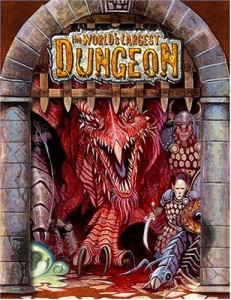 Maybe it’s because of stories of Castle Greyhawk, or that my first forays into CRPGs was through the mega-dungeon of Telengard. I’ve got this irrational fondness of really big, sprawling underground complexes. Maybe I’m enamored with the idea of huge, hidden worlds hidden below our real one. I don’t know. Even though the maps were only 10 x 10 squares, the original Wizardry dungeon left me feeling the same way. And of course, I’ll never forget the first time I read Fellowship of the Ring, and got to the part about Moria. It’s still my favorite section out of all of the books. I’ve always wanted to explore Moria, the great grandpa of imaginary mega-dungeons.
Maybe it’s because of stories of Castle Greyhawk, or that my first forays into CRPGs was through the mega-dungeon of Telengard. I’ve got this irrational fondness of really big, sprawling underground complexes. Maybe I’m enamored with the idea of huge, hidden worlds hidden below our real one. I don’t know. Even though the maps were only 10 x 10 squares, the original Wizardry dungeon left me feeling the same way. And of course, I’ll never forget the first time I read Fellowship of the Ring, and got to the part about Moria. It’s still my favorite section out of all of the books. I’ve always wanted to explore Moria, the great grandpa of imaginary mega-dungeons.
Many of my first maps for D&D were done on tiny graph paper that was something like an 8×8 grid per inch, and I filled it with lots of rooms and corridors and stairs to other levels. I never ran anyone through that dungeon… in fact, I don’t think I ever finished keying it up (all ten or so levels of it). If I’d actually run players through that dungeon, we might still be playing it today.
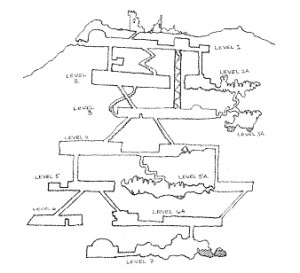 I was thumbing through Frog God Games’ Tome of Adventure Design the other day (an outstanding reference to kickstart your creativity when building adventures) and came across this quick vertical sketch of a dungeon complex, and immediately thought, “Yeah, that’s how it ought to be!” Several levels, different themes, all linked together in a giant complex. But it was more than just the idea of a big honkin’ dungeon. It had the “right ideas” in ways I’ll get to in a minute.
I was thumbing through Frog God Games’ Tome of Adventure Design the other day (an outstanding reference to kickstart your creativity when building adventures) and came across this quick vertical sketch of a dungeon complex, and immediately thought, “Yeah, that’s how it ought to be!” Several levels, different themes, all linked together in a giant complex. But it was more than just the idea of a big honkin’ dungeon. It had the “right ideas” in ways I’ll get to in a minute.
I don’t have a hard-and-fast definition for what constitutes a really big dungeon, but if one location (with multiple levels) dominates a computer RPG, it would count. Games that come to mind are the first five Wizardry games, Ultima Underworld, the Darklight Dungeon series, The Temple of Elemental Evil, Dungeon Master, the Eye of the Beholder series (at least 1 and 2), Torchlight 1, Diablo 1, Legend of Grimrock, and many (most?) roguelikes.
On the tabletop front, some of the titles that come to mind would be (obviously) The World’s Largest Dungeon (AEG), the Tomb of Abysthor (Necromancer Games) (Now included in Lost Lands: Stoneheart Valley by Frog God Games), Rappan Athuk (Necromancer Games / Frog God Games), Dragons Delve, Ruins of the Dragon Lord (Mongoose Publishing), and Expedition to Undermountain (Wizards of the Coast). Sadly, Gary Gygax’s attempt to recreate his legendary Castle Greyhawk campaign with Castle Zagyg ended prematurely with his death, and the first parts are no longer on the market.
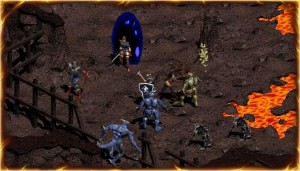 The obvious problem with giant frickin’ dungeons is that they can get pretty boring. I’ve experienced it in tabletop games. I’ve experienced it in video games. A huge, monolithic dungeon can get pretty dang tedious after a while. Variety is vital to keep things interesting. A good single-dungeon crawler needs several of the following:
The obvious problem with giant frickin’ dungeons is that they can get pretty boring. I’ve experienced it in tabletop games. I’ve experienced it in video games. A huge, monolithic dungeon can get pretty dang tedious after a while. Variety is vital to keep things interesting. A good single-dungeon crawler needs several of the following:
- Variety of theming: A change of scenery every few levels, so that the players aren’t always looking at the same style of stone walls.
- Variety of terrain: More than just cosmetics, this is where room layouts take on a new style. Manmade architecture gives way to natural caves, where stalagmites and uneven ground change the tactical environment. Levels partly or completely underwater, levels shrouded in fog, or (my least favorite) levels where magic doesn’t work…
- Variety of challenges: This is more than just facing different monsters on each level, although highly different monster types with very different approaches to fighting them is certainly desirable. But each level should also have different “goal conditions” and/or different types of challenges (like the aforementioned underwater levels or other navigational hazards). Dungeons levels should play differently.
- Multiple points of egress: You shouldn’t have to go back through all of the previous levels to get back to “home base” (a place of relative safety) and back again – via newly discovered secret doors, activated teleporters, or whateverc. Alternately, if no such place exists in the game, a level could have safe locations integral into most or all of the levels (as in Ultima Underworld).
- Unique Storylines Per Level: Ideally, each level should have its own story, too. The idea is to have players not only interested in the end-goal, but interested in exploring their current environment. What happened here, and what is currently happening here, and how does the presence of the player characters change everything?
There may be more ideas to keep the levels interesting, but that’s what I think of.
Naturally, from a pure gameplay perspective, there’s no functional difference from a single-dungeon experience implementing these suggestions and a game where these levels are split up into multiple dungeons, all nicely different. The same advice applies. It’s really just an interface and context issue… do you travel across the world to get to each spot individually, or all they all linked together? Other than lacking the need to travel, they don’t buy you much, but from a conceptual view, I love the clear progression in difficulty from the upper levels to the more dangerous lower levels, the oppressive feeling of being deep beneath the surface (where’s my canary?) and extending further and further from safety (even given shortcuts).
And of course, there’s that little voice from my childhood telling me that this is how dungeons are supposed to be. Epic!
Filed Under: Design - Comments: 7 Comments to Read
How to Suck at Indie Game Development
Posted by Rampant Coyote on September 29, 2015
 Cliff Harris reiterates some basic principles for what doesn’t work in indie game development. IMO, this list should be committed to memory by any aspiring game developer:
Cliff Harris reiterates some basic principles for what doesn’t work in indie game development. IMO, this list should be committed to memory by any aspiring game developer:
How to be Really Bad at Game Development
Now, everyone can probably name a game that seemingly violated at least one of these principles and went on to see great success… he even cites Flappy Bird. Sure, outliers and exceptions exist. But following those examples are kind of like not wearing a seatbelt in your car because of the rare cases where someone was “thrown clear” of a wreck they probably wouldn’t have survived inside the car.
The thing is, the market changes. The free market means things can be elastic and supply can grow to meet (or often, exceed) demand. In the early days of a platform, maybe simple, quick games – or generic ideas that can rapidly fill the need – may work out just fine. Games may succeed with minimal marketing because the pent-up demand seeks them out. But that won’t last forever, especially when supply is growing faster than demand.
This happens with every console, every console generation, every “hot” trend, and has clearly happened with mobile. There’s nothing new here. That’s why the AAA studios *LOVE* the launch of a new console. If the console is a hit, just being a launch title, when the platform is young and the competition is scarce, you can do a lot of these things less-than-excellently and still have a hit title. This is always temporary. It always gets harder from there. If you create a business plan around the assumption that this is the norm, then you are gonna be hosed.
Filed Under: Game Development - Comments: Comments are off for this article
Report from the Three-Day Geek Party
Posted by Rampant Coyote on September 28, 2015
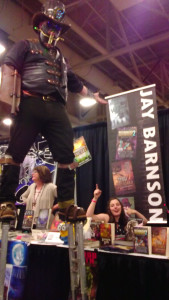 Welcome back my friends to the show that never ends…
Welcome back my friends to the show that never ends…
Well, okay, it does come to an end, or at least a hiatus. Although between FanX, Comic Con, the new Salt lake Gaming Con, Steamfest, Winter Faire, Anime Banzai and the like, geek partying in Utah is a pretty regular event.
Meanwhile, I try to sell books and games. Although at Salt Lake Comic Con this year, the selling books thing was what happened in-between panels and talking to people. I guess I could call this “networking,” and in a few cases that really is what it was. But these kinds of shows might be great for meeting people, but not so great for in-depth conversations. Other folks have books and games to sell as well, and hundreds of other people to say.
So I had fun. I sold books. I attended panels. I saw a few celebrities, although the need to hang out by our booth kept me from attending the some of the really big stars where you needed to get in line a half-hour or more in advance.
I did get to see Jenna Coleman, which was pretty cool. That’s three of the actresses who have played the Doctor’s companions that I’ve been able to see at Salt Lake Comic Con or FanX. Unfortunately, she needed to be pretty cagey about what happens this season, especially of her barely-announced departure from the show. Someone asked if she’d be willing to make another appearance in the show at a later date as Clara, and she slyly answered, “Well, that just depends on how Clara leaves, now, doesn’t it?” and refused to reveal anything else. Of course. She explained that when she played Oswin Oswald in Asylum of the Daleks, the script was originally written for just a temporary, throw-away character, but then Steven Moffat decided, “hey, wouldn’t it be cool if it was actually the Doctor’s upcoming new companion?” and ran with it. Coleman had already been cast as the new companion, and so it was no surprise to her.
 Most of the panels I attended were about writing. Go figure. We had a bunch of big authors this year, and so you’d better believe I was there soaking up whatever writing advice I could grab. The picture to the right is of the fantasy writing panel, consisting of James Owen, Jim Butcher, David Farland, RA Salvatore, Shawn Speakman, Jessica Day George, and Terry Brooks. How’s that for high-powered. Other panels mixed ’em up more with local best-selling writers like Michaelbrent Collings, Larry Correia, and Tracy Hickman, plus many more up-and-comers. While the panels weren’t geared for advanced writers, but they were full of advice and anecdotes.
Most of the panels I attended were about writing. Go figure. We had a bunch of big authors this year, and so you’d better believe I was there soaking up whatever writing advice I could grab. The picture to the right is of the fantasy writing panel, consisting of James Owen, Jim Butcher, David Farland, RA Salvatore, Shawn Speakman, Jessica Day George, and Terry Brooks. How’s that for high-powered. Other panels mixed ’em up more with local best-selling writers like Michaelbrent Collings, Larry Correia, and Tracy Hickman, plus many more up-and-comers. While the panels weren’t geared for advanced writers, but they were full of advice and anecdotes.
I took tons of notes. Much of the advice was stuff that I’d heard before, but when a best-selling author suggests it, it holds a bit more weight. That, and there’s tons of advice and it’s easy to forget the more important stuff in the day-to-day tasks. The panels covered subjects like writing fantasy, writing urban fantasy, characters, handling violence in stories, writing horror, and how to grip the reader in the first five pages.
And don’t imagine that this advice doesn’t apply to other media, especially games.
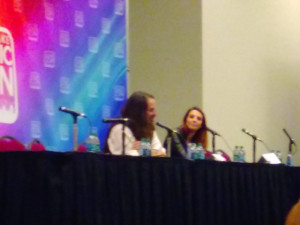 Jim Butcher was full of a lot of amusing anecdotes, including how he wrote Harry Dresden to prove his writing teacher wrong. He was doing graduate work and had an English Literature degree, so he thought he knew everything, while his teacher had “merely” sold 40 novels or so. What did she know? He got tired of her criticisms, and in full-of-himself college student confidence that he knew everything, he tried to prove her wrong by deliberately implementing every single piece of her advice into one book, just to show her what a soulless piece of unsellable pablum it would be. That was the first Harry Dresden novel. Obviously, he lost that argument. He also spoke about how the Codex Alera series began as an Internet argument. And BTW, he is definitely an extremely cool, sincere, humble, entertaining author that seems like an all-around nice guy.
Jim Butcher was full of a lot of amusing anecdotes, including how he wrote Harry Dresden to prove his writing teacher wrong. He was doing graduate work and had an English Literature degree, so he thought he knew everything, while his teacher had “merely” sold 40 novels or so. What did she know? He got tired of her criticisms, and in full-of-himself college student confidence that he knew everything, he tried to prove her wrong by deliberately implementing every single piece of her advice into one book, just to show her what a soulless piece of unsellable pablum it would be. That was the first Harry Dresden novel. Obviously, he lost that argument. He also spoke about how the Codex Alera series began as an Internet argument. And BTW, he is definitely an extremely cool, sincere, humble, entertaining author that seems like an all-around nice guy.
Then of course, there was the costumes.
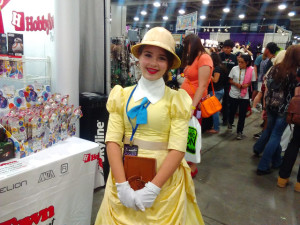 Sometimes I think half the entertainment at these cons are the other attendees. Some were absolutely amazing. Some were incredibly imaginative. Some, like Jane from Disney’s Tarzan on the right, seemed spot-on for all practical purposes. Others were inventive takes on favorite characters, like gender-swapped heroes or heroes transported into other eras or genres (like steampunk, etc.).
Sometimes I think half the entertainment at these cons are the other attendees. Some were absolutely amazing. Some were incredibly imaginative. Some, like Jane from Disney’s Tarzan on the right, seemed spot-on for all practical purposes. Others were inventive takes on favorite characters, like gender-swapped heroes or heroes transported into other eras or genres (like steampunk, etc.).
Our booth was right next to Ron Simmons, who was taking pictures and signing autographs. He had an almost constant influx of people coming to visit him, but he was a lot of fun to sit next to. He was funny and friendly the whole time.
With smaller cons, I run into the same people a lot – we joke that it feels like a family reunion more than a con. With something this size, though, we might run into people we know occasionally (it helps to have a lot of friends), or we have to hunt them down. It’s a challenge. Still, I managed to run into a lot of old friends – some of whom sought me out at my booth, some of whom I sought out at theirs. Friendly faces help make it a good time.
I left with half of a new wardrobe (helpful when I can keep wearing t-shirts to work), and I ended up buying as many new books as I sold. Ah, well. Maybe one day I’ll be in a position where I can make money at a con. Today is not that day, but that’s not a problem.
Filed Under: Events - Comments: Comments are off for this article
The Four-Step Universal Indie Survival Guide
Posted by Rampant Coyote on September 25, 2015
The first day of Salt Lake Comic Con 2015 is done. Thursdays are typically sparse, so if the wall-to-wall people and standing-room-only crowds for some of the panels this afternoon are any indication, Saturday is going to be absolutely crazy.
The panels I attended (all three of them) were writing-specific. Naturally, the rooms were packed with aspiring or neophyte authors. I thought back to two years ago, with the first Salt Lake Comic Con, when I was doing much the same. There were differences for me, personally – that year I was still “aspiring” and hadn’t yet ever published fiction (though I may have gotten my first rejection by then), and this year I had to boogie back to my table to make sure we were covered for selling our books, which I guess makes me a “neophyte” instead. 🙂
Maybe I was just in the wrong panels or talking to the wrong (or right?) people, but it felt like the tone has changed a little bit about the indie, self-published route. Maybe it felt like less of a “gold rush” mentality, I guess. Dare I say, it felt a little more mature, and more businesslike? The thing is, the indie book scene has become pretty saturated.
Having also attended the Utah Indie Games Night earlier this week, which I think might gave set a record for the number of games being shown in various stages of development, I was struck by a few parallels. The saturated market is an obvious parallel. But also how you deal with it, as an author. There’s no magic to it. While the details may change, it still comes down to the same things whether you are an indie author, indie game developer, or I expect even an indie rock musician:
#1 – Improve / Master your craft! This part is sadly neglected, probably because during the “gold rush” phase it’s not as important. This doesn’t mean achieving perfection, but it does mean being capable of meeting a certain level of quality. Otherwise it’s like trying to make an epic rock album when you haven’t yet learned how to play your instrument.
#2 – Produce! Be prolific! Create stuff that speaks to you, personally, but make it more universal and tuned to your audience, and keep improving (or maintaining) your competitive quality. Finding that balance between what the audience demands and what you really want to make might take a little bit of juggling, too.
#3 – Do all the crap that you probably don’t want to do to build and grow your audience and your ability to serve them. The marketing / sales / PR / business development kind of stuff. If you are no good at it, hire someone else to help, but it will still demand a lot of your time and effort. Just remember: you aren’t helping anybody if you have the perfect book or game for someone but they don’t know it exists.
#4 – Go back to #2 (or, arguably, #1, because you can always get better).
There are many more details and variations within those steps, but that’s the gist of it regardless of which creative field you happen to get into as an indie. Periodically, disruptions may occur that allow some temporary shortcuts and change some of the details – sometimes forever – but they don’t change the fundamentals.
Filed Under: Game Development, Writing - Comments: 2 Comments to Read
TheMeatly Kickstarter
Posted by Rampant Coyote on September 24, 2015
Crowdfunding is pretty much a constant thing these days. My hope with all things saturated is that the cream will rise to the top. But sometimes the cream needs some help. For friends and really cool-sounding projects, I’ll make note of the projects and suggest them here, but even if the projects sound interesting to you, too, you have to assess your own risk. But I’m still glad that there’s at least a partial funding solution out there for indies that doesn’t depend on a handful of gatekeepers out there.
Anyway, I am a fan of TheMeatly comics. They are focused heavily on indie games and development. He is running a kickstarter this month to take both comic and game development to the next level. If you are interested in supporting that, you can check out his pitch and everything here:
TheMeatly Takes On Gaming Kickstarter
Filed Under: General - Comments: Comments are off for this article

